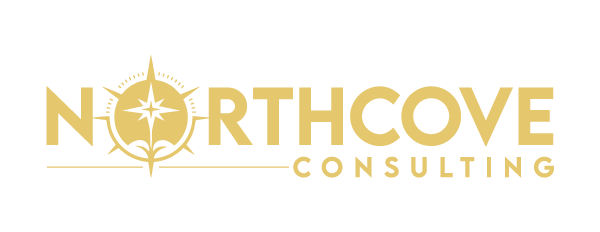
HR Policy Development Process Explained Step by Step for Small Businesses
HR policies often get labeled as “corporate stuff,” but they’re just as crucial for small businesses as they are for large ones. No matter if you’re running a lean five-person team or growing at full speed, having a clear HR policy development process brings structure, protects your people, and keeps everyone on the same page.
According to a 2023 SHRM report, businesses with clear HR policies reduce employee disputes and compliance issues by up to 60%. That’s huge. These policies aren’t just paperwork—they’re protection, culture builders, and decision-making tools.
This guide walks you through the HR policy development process step by step. You’ll learn how to create consistent, legally sound, and easy-to-understand policies that support your team and your goals.
Understanding the HR Policy Development Framework
The HR policy development is where it all begins. HR policy development process is your blueprint—a structure that makes sure everything you create supports your business, keeps you compliant, and aligns with your culture.
What goes into a strong framework?
- Business Objectives: Your policies should work in harmony with your big-picture goals.
- Legal Compliance: You’ll need to stay on top of federal, state, and local laws.
- Workforce Needs: Think about who your employees are and what makes your workplace unique.
- Stakeholder Input: Involve key players like leadership, legal advisors, and HR pros.
- Communication Plan: How you share and enforce these policies matters just as much as writing them.
And if you’re also reviewing how compensation fits into your policy work, check out your total reward solutions for talent management for deeper alignment across the board.
Steps in HR Policy Formulation
Knowing the right steps in policy formulation saves time, cuts confusion, and helps you avoid costly missteps.
Step | What It Involves |
1. Identify Needs | Look at current gaps, growth plans, or legal requirements. |
2. Research | Study employment laws and other companies in your space. |
3. Draft Policy | Use simple, clear language that’s legally accurate. |
4. Stakeholder Review | Get input from HR, legal, and leadership. |
5. Revise & Finalize | Update your draft with feedback and legal tweaks. |
6. Approve | Secure final sign-off from key decision-makers. |
7. Communicate & Train | Make sure your team understands what’s changing and why. |
8. Monitor & Update | Review policies regularly to keep them relevant. |
This HR policy development process keeps your HR foundation solid and your risk low.
How to Develop HR Policies That Are Practical and Legally Sound
If you’re wondering how to develop policies that people will actually read—and follow—you’re not alone. It’s all about finding the balance between simplicity and thoroughness.
Tips to make your policies stick:
Use plain language: If your team can’t understand it, they won’t follow it.
Get specific: Be clear about what’s expected and what happens if it’s not met.
Match your tone to your culture: A startup might go casual, while a legal firm sticks with formal.
Test drafts internally: A few early readers can help you catch weak spots before rollout.
And when you’re building in leadership perks or performance policies, make sure they align with your executive compensation consulting services to avoid any disconnects down the line.
Creating Effective HR Policies: Topics to Include
Every business is different, but some HR policies are non-negotiable. Here’s a starter list for creating HR policies that cover your bases:
- Equal Employment Opportunity
- Code of Conduct
- Work Hours & Attendance
- PTO, Sick Leave, Parental Leave
- Harassment & Discrimination Prevention
- Health and Safety Protocols
- Disciplinary Process & Termination
- Remote or Hybrid Work Rules
- Data Privacy & Confidentiality
- Social Media and Tech Use
Your compensation practices should also sync with your compensate handling strategy sales to ensure fairness across departments and roles.
HR Policy Implementation Process: From Paper to Practice
So you’ve written the HR policy development process—now what? The policy implementation process is where those great ideas become daily habits.
A strong rollout plan includes:
- Sharing policies in handbooks, new hire packets, and online portals.
- Training employees and managers so they know what’s expected.
- Real-life examples to help employees apply policies on the job.
- Acknowledgment tracking to confirm everyone’s on the same page.
- Consistent enforcement to build trust and fairness.
- Continuous feedback to refine and update as needed.
A policy no one reads (or understands) won’t help your business— HR policy development process and implementation is everything.
HR Policy Development Checklist: Don’t Miss a Step
Need a quick-reference guide? Use this HR policy checklist:
- Identify policy areas that matter now
- Stay current on legal obligations.
- Review what you already have.
- See what’s working in your industry.
- Draft clearly and concisely
- Run it by HR and legal.
- Present to leadership
- Train your team
- Confirm acknowledgment
- Review regularly and update as needed.
Remember—your policies aren’t static. As your team, tools, and legal landscape change, so should your policy development process.
Real-World Example: Startup HR Policy Success Story
A 12-person tech startup decided it was time to get serious about HR. With no internal HR staff, they partnered with a consultant and used a shared spreadsheet to outline what policies were needed most. Once the HR policy development process was done, they rolled out the policies through interactive online training, with quizzes to boost understanding.
Within a few weeks, the team reported fewer misunderstandings around time off and conflict resolution. They even passed their first compliance audit with flying colors.
The founder said that a clear employee benefits communication plan made a huge difference in hiring—new candidates came in knowing what they were getting.
It just goes to show: small businesses can build strong HR foundations that scale.
Conclusion: Build Strong Foundations with Clear HR Policy Development
At the heart of every thriving business is a team that knows what’s expected and feels supported. The HR policy development process helps make that possible. From setting fair standards to protecting your business legally, solid policies are key.
Follow the steps, stay consistent, and involve your people at every stage. Whether you’re just starting out or leveling up, well-crafted HR policies are your business’s safety net and culture guide. Need help getting started? A partner like Northcove Consulting can help you turn ideas into action, with policies that work for your people and your plans.
Need help with your policy development process or reviewing your HR policies? Contact Northcove Consulting through Email [email protected] or phone call (877) 595-3087.
Frequently Asked Questions
What is the HR policy development process?
The policy development process is a structured method for creating, reviewing, and rolling out workplace policies that guide how a business manages its people.
What are the basic HR policy creation steps for a small business?
For HR policy steps, start with identifying needs, then draft your policies, get legal and leadership review, roll them out to employees, and monitor results.
How often should we update our HR policies?
Aim for at least once a year—or sooner if laws change or your business evolves.
Do small businesses need as many HR policies as large corporations?
Not at all. Start with the essentials and grow from there. Quality and clarity matter more than volume.
Can we create HR policies without a full-time HR manager?
Yes. Many small businesses work with consultants or use tailored templates, but always ensure legal review before implementation.
Related Posts
How Compensation Benchmarking Tools Help HR Make Data Driven Pay Decisions
How Compensation Benchmarking Tools Help HR Make Data Driven Pay Decisions Today’s changing work environment…
Employee Handbook Best Practices Every Small Business Should Follow
Employee Handbook Best Practices Every Small Business Should Follow An HR management consulting company recognizes…
How an Interim Total Rewards Consultant Can Optimize Your Compensation Strategy Fast
How an Interim Total Rewards Consultant Can Optimize Your Compensation Strategy Fast When companies face…
How to Build Effective Total Rewards Communication Strategies That Employees Understand
How to Build Effective Total Rewards Communication Strategies That Employees Understand Employees want to feel…







